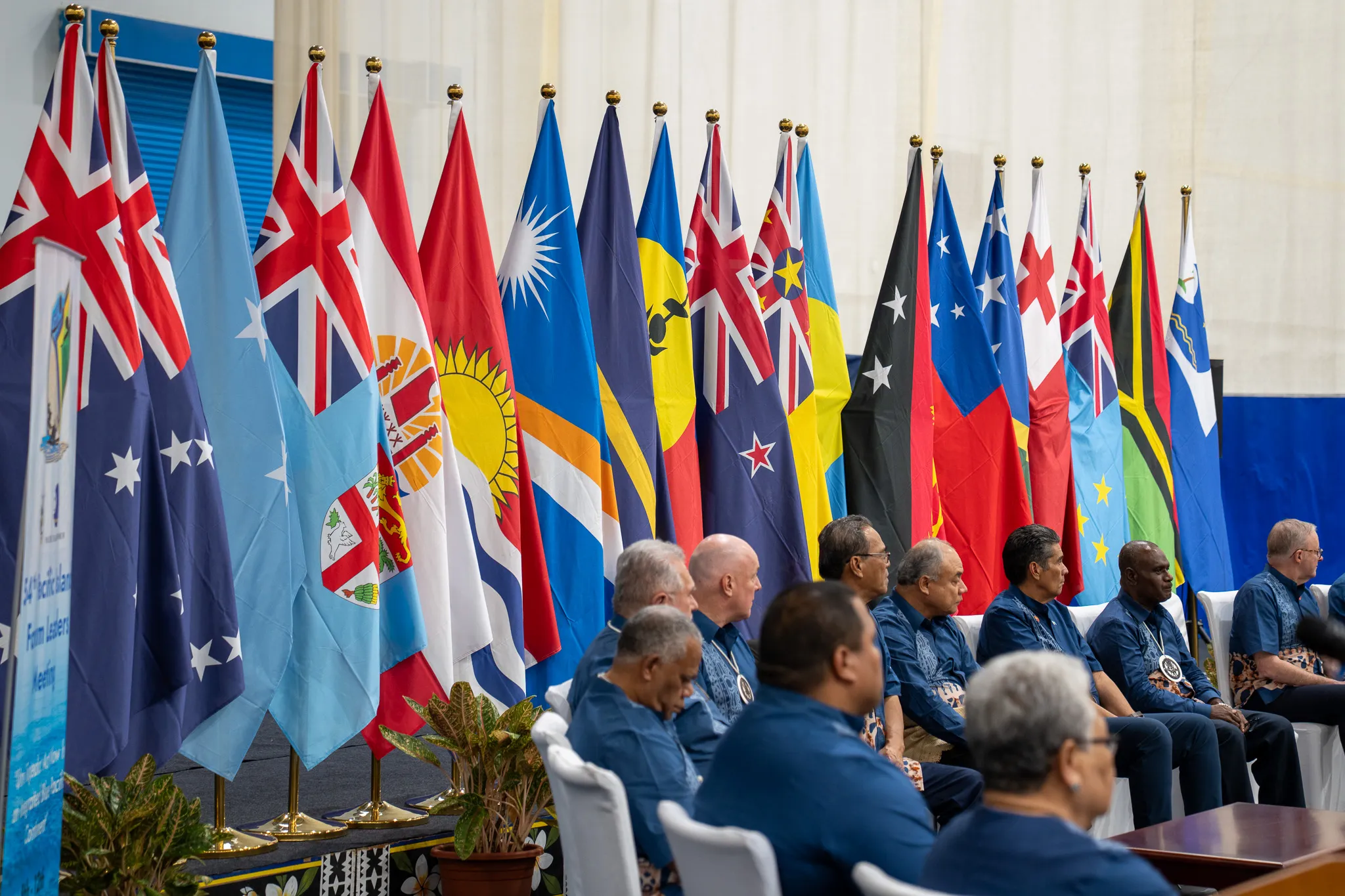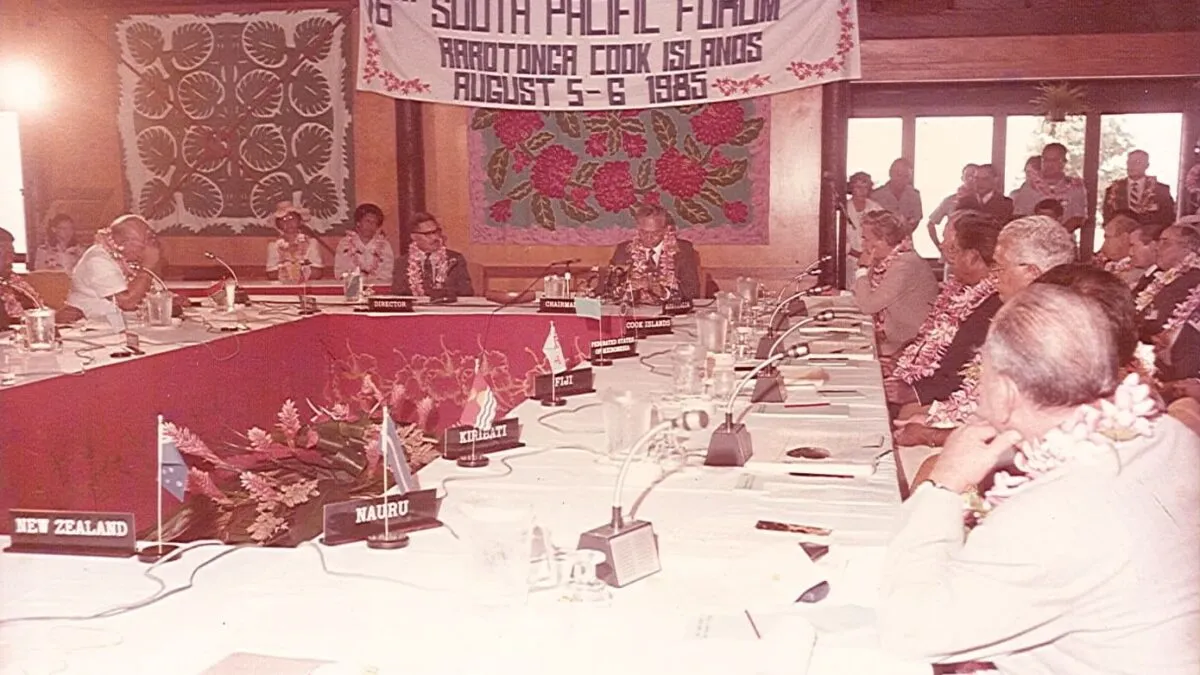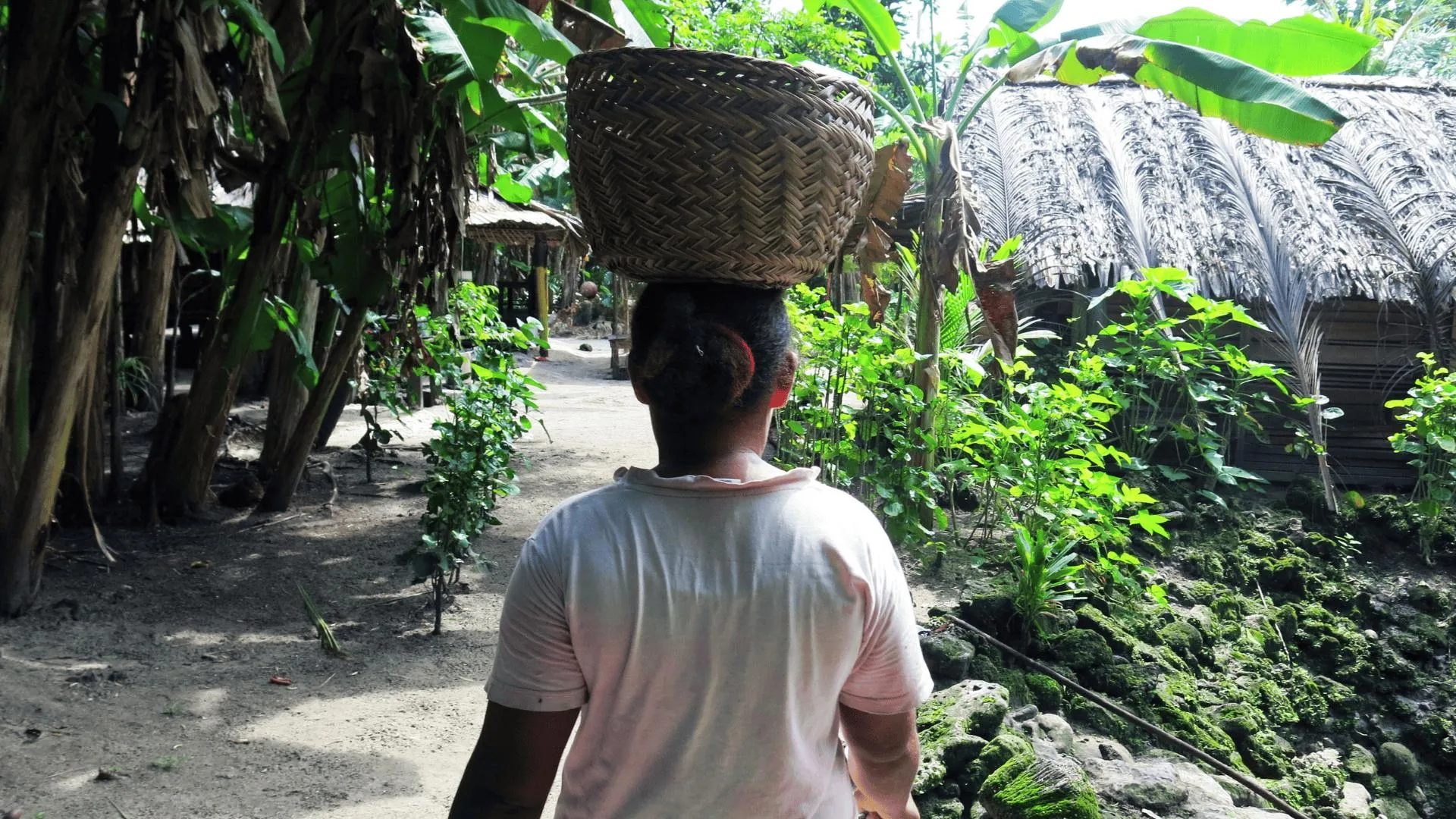Calm seas, strong currents: masculinities beneath the Pacific’s Ocean of Peace

The Ocean of Peace must support communities to prioritise reparative justice to create meaningful change. Photo: Pacific Security College
At the 2025 Pacific Islands Forum Leaders Meeting, the Blue Pacific was declared an Ocean of Peace. This vision promises calm seas amid turbulent times, an aspiration linking cultural values, climate justice and regional agency.
But for some, this rhetoric coincides with growing great-power competition, new defence partnerships, and rising militarisation that complicates the promise of a demilitarised Pacific. Read through feminist and masculinities scholarship, the declaration’s language of guardianship and sovereignty looks less like a radical reimagining of security and more like a familiar masculine shorthand: protection, control and state stewardship that legitimise coercive government activities rather than dismantling them.
The urgent question, then, is whether the Ocean of Peace will be realised as a lived, decolonial, relational security approach or remain as state-centred guardianship that perpetuates masculine power?
The promise of peace
The Blue Pacific Ocean of Peace Declaration proclaims regional unity, the Pacific Way, respect for sovereignty, and commitments to climate action, human rights, and affirms the United Nations Convention on the Law of the Sea as the legal basis for maritime order.
It situates peace within the 2050 Strategy and past regional instruments, and explicitly names the inclusion of women, youth, persons with disabilities and civil society as essential to the vision. These aspirations give Pacific leaders a normative platform to assert agency in multilateral settings and demand Pacific-led international support.
When the language of peace moves from declaration to policy, it is typically absorbed into existing institutional logics: peace becomes understood as governance and control, rather than demilitarisation, restorative justice, or Indigenous relational practice. The Declaration’s institutional embedding within state and regional architectures risks turning the ocean into a bureaucratic object of stewardship rather than a living commons governed through decolonial, community-led practices.
In this framing, peace becomes a function of bureaucratic order rather than relational repair, a distinction that matters when institutional ‘guardianship’ replaces shared responsibility.
Peace as protection: reading the masculinised subtext
The Declaration’s verbs – ‘safeguard’, ‘protect’, and ‘strengthen’ are not neutral. Feminist theory and international relations scholars show these verbs are based in assumptions of protection that authorise paternalistic leadership and concentrate coercive capacities in male-led institutions such as the police force and the military.
Behind the promise of protection lies a quiet trade-off: greater state control in place of the harder work of demilitarisation, accountability, and repair.
In claiming to safeguard their nations, governments often consolidate authority and recast peace as obedience, a move that secures order but leaves the deeper causes of insecurity untouched.
Scholars in the fields of masculinities and women, peace, and security (WPS) add that policy tracks dominated by national security actors frequently sideline the root causes of conflict – masculinities, militarism and patriarchal relations – in favour of measures that shore up sovereignty and deterrence. Militarised masculinity researchers similarly underline how militaries and security institutions are producers of masculinity, legitimising force as the appropriate mode of ordering international life.
Collectively, this body of work suggests the Ocean of Peace risks becoming a ‘peace of guardians’, where the principal currency is territorial stewardship and state control rather than relational justice and care.

Leaders at the 54th Pacific Islands Forum Leaders’ Meeting in Solomon Islands. Photo: Pacific Security College
The silences: what the Declaration doesn’t say
Conspicuous silences in the Declaration matter.
There is no explicit language committing to demilitarisation, curbs on foreign bases, or restrictions on defence agreements reshaping the Pacific’s strategic landscape. These omissions leave space open for external military entrenchment under the banner of Pacific security.
Feminist critiques of WPS show how official documents often include women and civil society as partners but stop short of ceding agenda-setting power; this ‘additive inclusion’ leaves masculinist structures intact unless policy addresses masculinities as structural drivers of armament and violence. In Bougainville, grassroots Male Advocacy work demonstrates a different pathway. There, community-based, pro-feminist programming has reframed ideas and strategies of masculinities to tackle the root causes of violence. But in other parts of the Pacific, such initiatives remain peripheral to state security architectures and their logic.
Attempts to integrate masculinities into WPS policies are frequently domesticated by policymakers who find anti-militarist framings neutralising their transformative potential.
In short, naming civil society without redistributing power keeps the declaration’s commitments ineffective and confined to paper.
The irony of the ocean
The ocean as a metaphor evokes fluidity, kinship, shared livelihoods and ecological reciprocity – a way of knowing central to many Indigenous Pacific cultures.
Ironically, the Declaration’s reliance on state sovereignty, legal regimes, and rules-based order recasts the ocean as a territorial jurisdiction rather than as relational and rooted in Indigenous law and communal care.
Decolonial scholars point out that colonial and militarised governance has historically resulted in oppressive hierarchies that marginalise women’s roles. And yet we know from Pacific grassroots experience that transforming masculinities locally produces new forms of authority based on equality and care, which is precisely the relational peace the ocean metaphor should signal.
The question is whether the declaration will protect a bounded Blue Pacific or enable community and Indigenous-led transformations that demilitarise governance and prioritise reparative justice.
Practical implications and a way forward
If the Ocean of Peace is to become more than diplomatic rhetoric, policy must move beyond symbolic inclusion and towards three interrelated shifts.
First, demilitarisation must be named and pursued. There should be limits on basing, transparency about defence pacts, and regional mechanisms for conflict prevention that do not default to militarised deterrence.
Second, masculinities must be treated as structural – integrating anti-militarist, intersectional masculinities analysis into national action plans and regional strategies. This means going beyond requirements to ‘engage men’ and transforming privilege-bearing security institutions.
Third, centre Indigenous and feminist ways of working by funding and empowering grassroots peacemaking, reparations for nuclear and militarised harms, and community healing initiatives that have shown impact across the Pacific. These steps require political bravery from Pacific leaders and external partners willing to cede space and resources to locally-led decolonial security practices.
The Blue Pacific’s Ocean of Peace must be more than a slogan; otherwise, the ocean will remain a bounded territory to be defended – calm in appearance but carrying strong masculine currents beneath the surface.
Romitesh Kant is a researcher specialising in gender, political masculinities, and democratic governance in the Pacific.
This blog is part of a special series marking the 25th anniversary of United Nations Security Council Resolution 1325 on Women, Peace and Security.
Views expressed via the Pacific Wayfinder blog are not necessarily those of the Pacific Security College.
This article is licensed under a Creative Commons Attribution-NonCommercial-NoDerivatives 4.0 International License (CC BY-NC-ND 4.0). Read our publishing policy.
- Themes:
- Women Peace and Security






